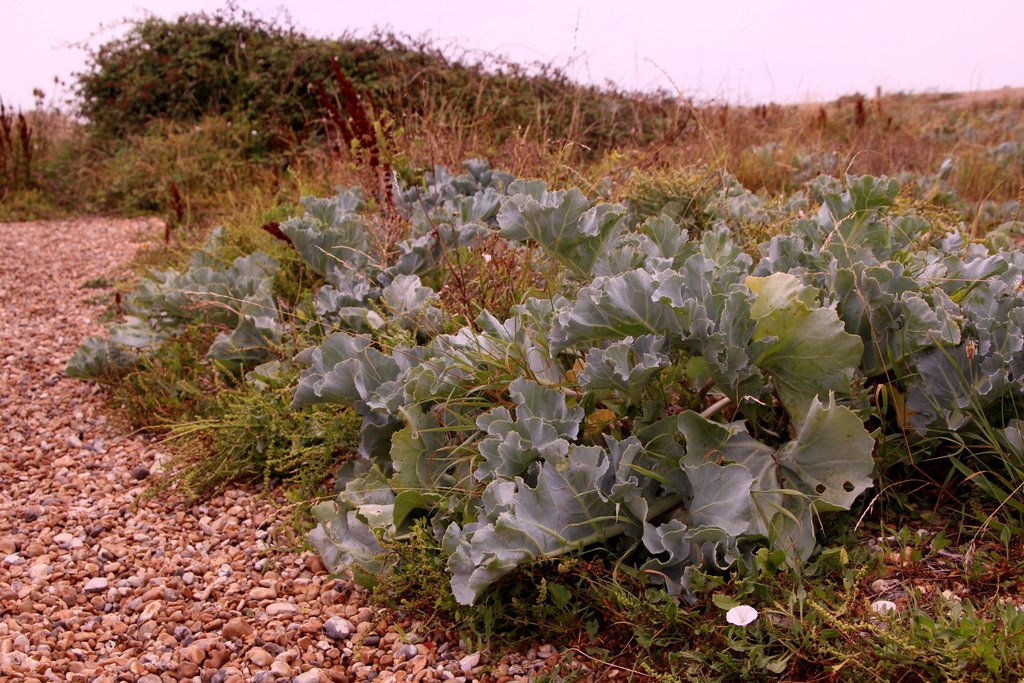On the Beach. Tuesday 23rd August.
Did you know that Seaford has one of the best undisturbed shingle beaches in the country? It is as good as Dungeness or Chesil ….if a little smaller! Tide Mills was our destination and our guide, Dr Sarah McKenzie, began by explaining that longshore drift necessitates shingle redistribution on the beach to the east. Here at Tide Mills the beach is protected by the Newhaven breakwater and it remains undisturbed. Consequently, pioneer species such as Sea Kale and Curled Dock can become established in this challenging, dry and unstable environment.
One spectacular pioneer is the Yellow Horned Poppy (pictured). We learnt that its beautiful yellow flower only lives for a day, whilst its roots can go down for 2 metres as they quest for that elusive fresh water below the surface. The long thin seed pods that give the poppy its name contain hundreds of tiny seeds, but the sap it exudes is poisonous.

As the pioneers die, they provide nurseries for the next generation of colonisers such as Woody Nightshade (Bittersweet) or the succulent Biting Stonecrop, as succession continues.
Finally, we split into groups to find the plants for ourselves, using the checklists so thoughtfully distributed to members beforehand. All in all, a lovely time was had by all, and our thanks go to Dr McKenzie, who was ably assisted by SNHS members Jenni Empson-Ridler and Janice Reynolds.

Mike Vingoe.
P.S. Members asked for details of the beautiful book both Sarah and Jenni were using. It was “Coastal Wildflowers” by Sterry and Cleave (ISBN 978-0691218151).
This news story was originally published by the Seaford Natural History Society. Find out more about how to join, or come along to their events, on their website




